
How to Care for Begonias: Basic Tips For Beginners
Published: 05/10/2022 | Updated: 29/03/2023
Begonias, mostly known for their begonia semperflorens varieties, are classic houseplants that are loved by many style-conscious homeowners. They have stiff, sturdy leaves with spiky edges, and they often have large, brightly colored flowers that bloom all summer long. Some begonia varieties produce yellow, red, or pink flowers; others bear white blossoms with pink centers. One of the reasons why this flowering plant is so popular is that It's very easy to care for. The begonia plant is one of the few houseplants that do not need any special lighting or fertilizing. This makes it a great option for those who don’t have much time to devote to their plants.


Begonias are native to tropical and subtropical regions, but they can adapt well to a range of different environments. However, when it comes to their care, some basic tips can help you grow healthy plants throughout the year. In this article, ShrubHub will tell you how to care for begonias indoors and outdoors!
Begonias Growth Zones, Height, and Bloom Time

Begonias are perennial plants in their native habitats and are short-lived perennials in U.S. gardens, so they can be grown as annuals in most areas of the country. In the southern states and California, however, some species will survive for two or more seasons with proper care.
Begonias grown as annuals should be planted directly into your garden after the danger of frost is over (or grown indoors if you live in a region where they won’t do well). If you want to keep them through the winter and plant them outdoors again next spring, choose varieties specifically labeled “perennial” or “hardy” rather than ones that say “annual” on their seed packets or tags at your local nursery. Begonia seeds sprout within eight days when exposed to light at 70 degrees Fahrenheit (21 C.). When the seedlings have developed two leaves each, transplant them into 3-inch pots filled with commercial potting soil mixed with peat moss. Keep them moist until new growth appears above ground level—this usually takes about three weeks—then water sufficiently until the plants are established (about one month).
Begonias Varieties
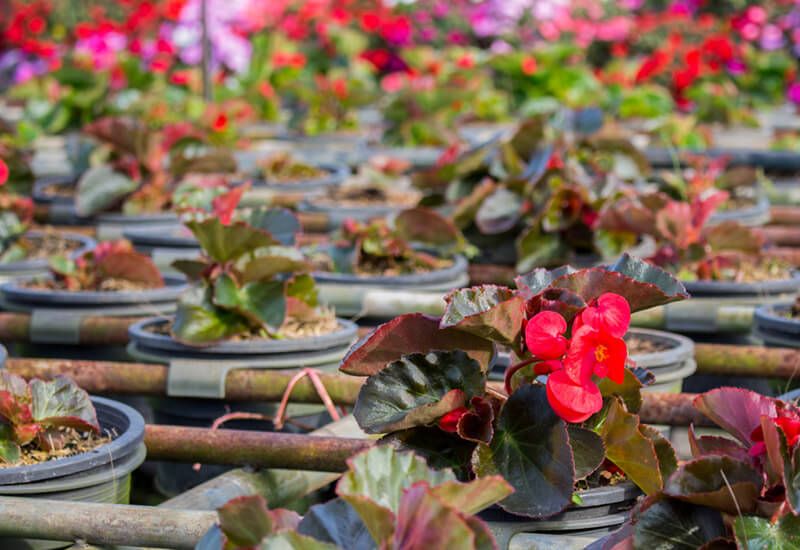
Begonias make beautiful and long-lasting cut flowers, and they can also be planted outdoors in hardiness zones 9 to 11. There are more than 300 species of begonias, but most people only grow the hybridized cultivars that have been bred for their color or size.
Wax Begonias
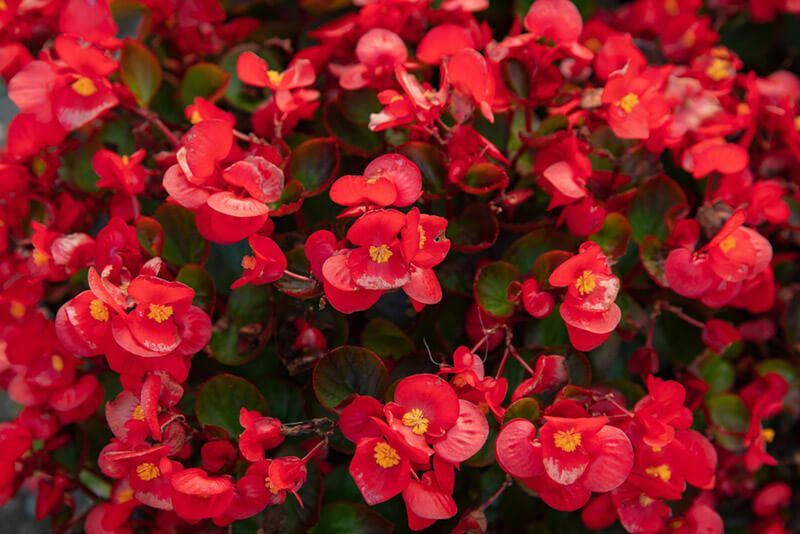
Wax begonias, also known as begonia semperflorens, are the most common type of begonia, and they're hardy to zone 10. They grow best in full sun or partial shade, and they prefer fertile, well-drained soil. If you think your soil isn't suitable for planting wax begonias, you can amend your dirt with peat moss or vermiculite to help with drainage issues. If your wax begonia doesn't get its proper amount of water, it will start turning yellow and brown from root rot. This means that too much water has been staying around their roots for too long! To prevent this problem from happening plant them in a raised flower bed filled with good drainage material like perlite or broken pieces of concrete pavers that allow excess moisture to flow through more easily.
Tuberous Begonias
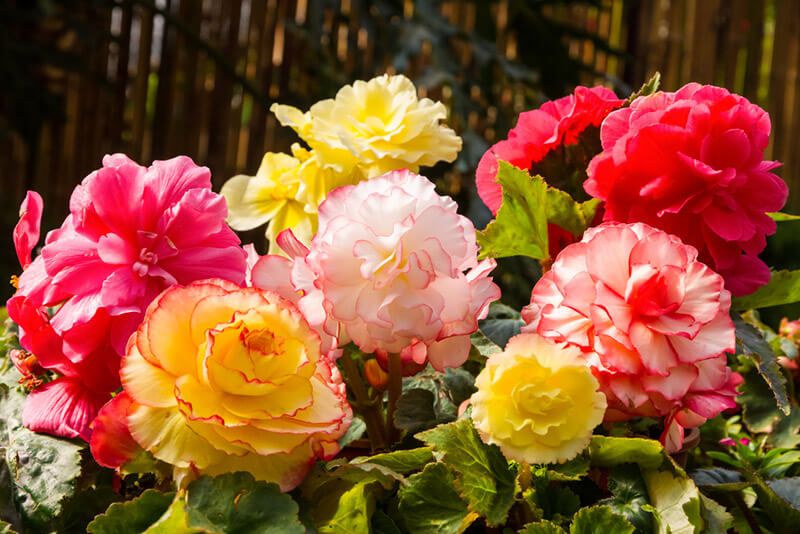
If you're looking for a begonia that's easy to grow and care for, tuberous begonias are the way to go. These plants require partial sun, so they can be grown indoors or outside (they'll do best in a container). Despite their name, tuberous begonias don't have any tubers! They produce rhizomes underground—which is why you'll be able to propagate them easily.
To propagate tuberous begonias, you'll need to divide their rhizomes into separate pieces and plant them in pots or containers with proper soil drainage and an appropriate amount of water.
Cane Begonias
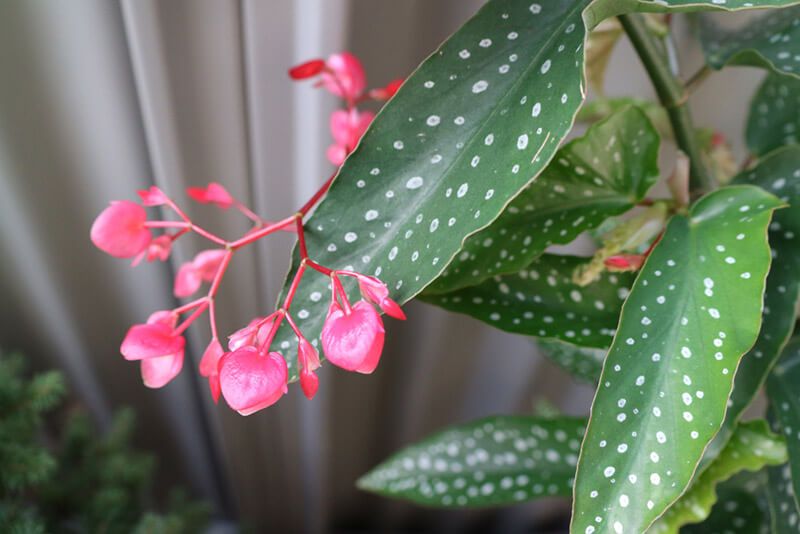
Cane begonias, also known as angel wing begonias, are small, compact plants that produce large, colorful blooms. They grow well in pots and hanging baskets. They also grow well outdoors in the summer. They need to be kept in an area that is warm, but not hot so that it does not get stressed out.
These plants should be grown in full sun and watered from the bottom. Watering from the top is not recommended for cane begonias because it can cause their stems to rot away. They are also susceptible to root rot if they don’t have proper drainage. This can be avoided by using a pot with a hole in the bottom and adding gravel to the bottom of it for better drainage.
Rex Begonias
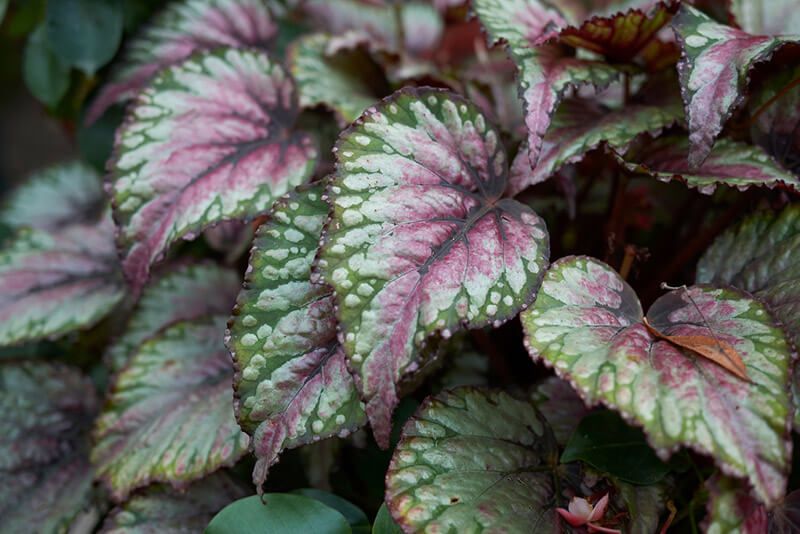
Rex begonias, begonia rex, or Rexy begonias are rhizomatous begonia that can be grown outside in hardiness zones 10 and 11. They are a newer type of begonia that has been bred to have more flowers. They are not as hardy as other begonias, but they make up for it with their huge blooms. Rex begonias look great cascading down from hanging baskets or planted in containers on your deck or patio, and they’re also excellent for terrariums.
They are also easy to grow and can be planted in almost any soil type. They need plenty of light and water, so make sure you keep them on a sunny windowsill or under fluorescent lights.
Rhizomatous Begonias
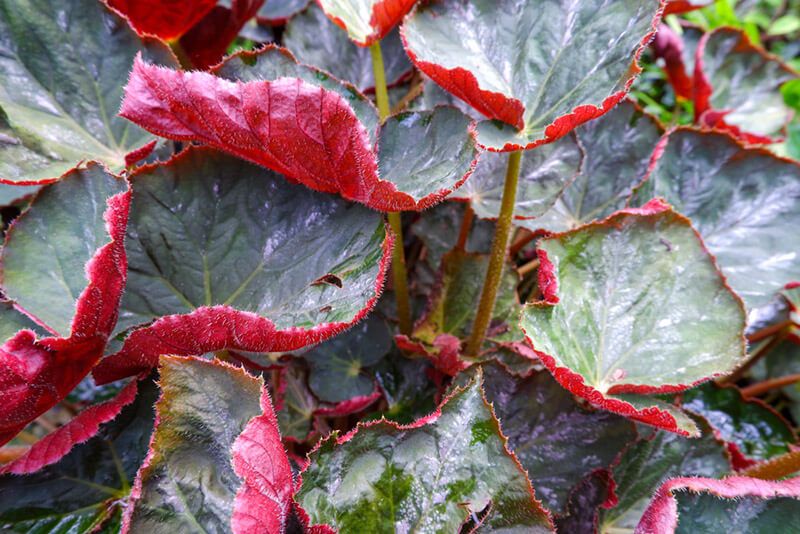
Rhizomatous begonias are a type of begonia that can grow in a variety of ways. Some varieties grow as upright shrubs, while others produce long trailing vines. Rhizomatous begonias can also be trained to grow along fences or trellises. The term rhizomatous refers to the way these plants spread and multiply. they produce thick roots that look like rhizomes. These rhizomes send out new shoots and flowers as they grow. Rex begonias are another type of begonia that was developed from rhizomatous types. The difference between them is all about appearance: rex begonias have curly leaves, while rhizomatous types have straight leaves. Rex begonias also tend to bloom more profusely than other kinds of begonia because their flowers grow on top of their leaves instead of underneath them (as with rhizomatous types).
When to Prune Begonia
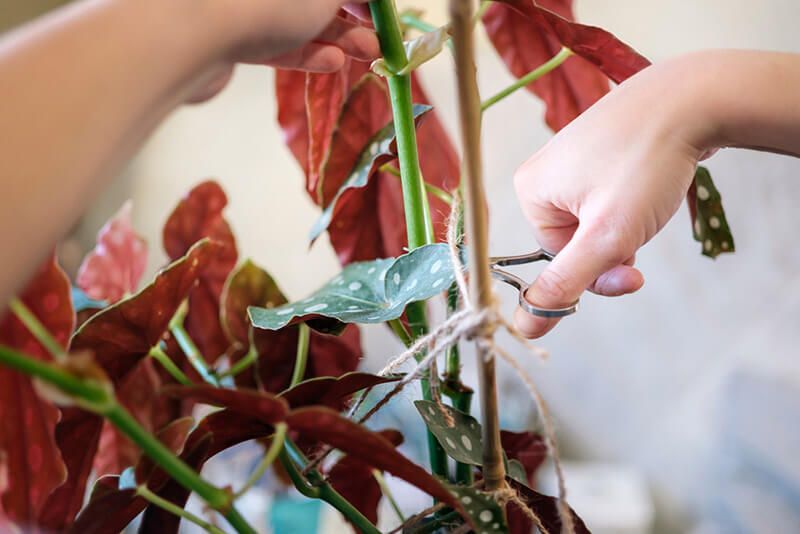
You can prune begonias when they are dormant in the winter or when you notice that a leaf has turned yellow. Early spring is also a good time because it gives new growth plenty of time before the summer heat arrives. You should avoid pruning during the summer months as it will slow down growth, not to mention you might damage your plant if you don’t know exactly what you’re doing. If your plant has grown too large for its container, divide it into smaller clumps by cutting off some of its stems at an angle before putting them back into pots or containers filled with moist soil.
How to Prune Begonias
Pruning is an essential process for begonias, as it helps them maintain their size and shape for as long as possible. When deciding how much of the stem needs to be removed, it’s important to keep in mind that removing more than half will result in dead branches (so don't cut off more than half). For proper pruning, remove dead leaves, cut back the plant to about half its size every spring, remove any plants that are damaged or diseased, and prune to shape the plant if desired.
Tips for Growing Begonias
To start growing begonias, you'll need rooted cuttings from a nursery or home improvement store. You can also grow begonias from seed, but it's much easier to try growing them from cuttings because they're hardy and grow easily.
-
If you want to be on the safe side, buy new ones every year—and if you really want to get into growing begonias, this is where you can get started!
-
Here are the steps you need to follow to grow some healthy begonias:
-
The first thing you need to do is find a pot that's about 10 inches in diameter and has drainage holes at the bottom.
-
You'll also need some potting soil made for begonias.
Now that you've got your new container and soil, it's time to plant begonias:
-
First, remove the plant from its old container by gently pulling out any roots that may be tangled together.
-
Then put a bit of water into the bottom of your new container so that all of its sides are moistened before placing your transplant into place.
-
Planting too many begonia plants against each other will cause them to rot—so make sure there's plenty of space between them when arranging them inside this new home.
How to Care for Begonias
Use Well-Drained Soil
When growing begonias, you should always use well-drained soil that isn't too dry. If you live in an area with sandy soils or your tap water is exceptionally hard (contains high mineral content), try mixing a little bit of peat moss into the potting mix before planting to help improve moisture retention and reduce the chance of root rot. Keep the potting container evenly moist, but not soaking wet at all times; let any excess water drain out from around the drainage holes when watering.
Keep Your Soil Moist
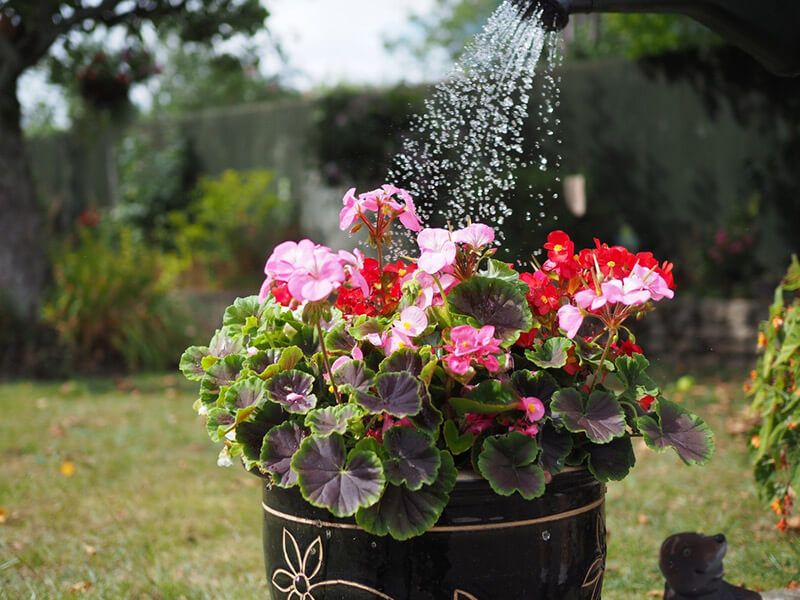
Watering begonias should be done in the morning so that it has all day to dry out because as much as begonias love moist soil, but not soggy soil. Be aware that begonias can easily wilt and die from overwatering. The best way to water them is by using a watering can or hose, avoiding overwatering and underwatering. Avoid using a sprinkler system around begonias because it can cause fungus diseases and damage their leaves.
Give Your Plants Enough Sunlight
Although begonias can tolerate afternoon shade, they prefer bright light. That doesn’t mean that you can keep the plant in the sun all day long as it can damage the leaves and lead to various diseases. They like bright light but not direct sunlight, so make sure your pots have good drainage holes if you plan on planting them outside. If you need to move your begonia indoors during the winter months, make sure it gets at least six hours of bright light each day.
Put Begonias in a Humid place
Humidity is essential for many plants, including begonias. If you live in an arid climate, you can increase humidity around your plants by using a humidifier or placing your plant in a terrarium that has water in it. You can also add pebbles to your potting mixture to help hold the moisture close to the roots. Begonias with higher levels of moisture will be healthier, which means they’ll have better color and growth compared to those grown in drier conditions
Use Balanced Fertilizers

You don't want your begonias to starve, but if you give them too much food they can get sick. Begonias need a balanced diet of nitrogen and potassium, so make sure you're not overfeeding them with either nutrient. If your begonia is getting leggy and droopy, that's probably a sign that it needs more nutrients in general—not just more fertilizer! You can also try adding some organic matter like compost or bark mulch to help improve the soil quality and add nutrients for your begonia to absorb.
Encourage Blooms by Fertilizing Every Two Weeks
You can encourage blooms by fertilizing every two weeks during their growing season from May to September or October. The best fertilizer for begonias is one that's high in nitrogen and lower in phosphorus and potassium. You can use a fertilizer with a 10-10-10 or 20-20-20 ratio, or one with a 6-12-12 ratio. Begonias also need to be watered regularly. If they're in a container, make sure the soil stays moist but not soggy. If you're growing your begonias in the ground, water them deeply once a week or so with warm or hot water.
When Repotting, Avoid the Sensitive Roots

Begonias are delicate plants that need to be repotted with care. The best place to start is a pot at least 10 inches in diameter, preferably with drainage holes. If you can't find an appropriately sized pot, add some drainage material (e.g., perlite or horticultural sand) to your existing container so that it has additional space for water and oxygen circulation. For the second step of repotting, gently remove your begonia from its current container and place it on top of a towel or newspaper so as not to damage its roots. Then, carefully lift each root ball in turn and place it into the new container so that the base of the plant sits firmly on top of its soil.
Conclusion
With a little bit of care, your begonias will grow beautifully. They make excellent houseplants and can even be grown outdoors in warmer climates. With so many varieties to choose from, there's no reason not to have one or two around! Whether you’re looking for something small and easy to care for or large enough for a border, be sure to keep these tips in mind when selecting your next begonia.
And as always, don't forget to check out ShubHub's plant experts' advice before tackling your next yard renovation!


